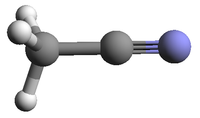|
The microwave and millimeter wave data were reported
by
(1) J. Demaison, A. Dubrulle, D. Boucher, J. Burie,
and V. Typke,
1979, J. Mol. Spectrosc. 76, 1.
Submillimeter data were bublished by
(2) F. X. Brown, J. Cosleou, D. Dangoisse, J. Demaison,
and G. Wlodarczak,
1989, J. Mol. Spectrosc. 134, 234.
A DK value was derived from
a force field calculation by
(3) J. L. Duncan, D. C. McKean, F. Tullini,
G. D. Nivellini, and J. Prez Peña,
1978, J. Mol. Spectrosc. 69, 123.
Using that value, A was determined by
(4) S. Alanko, M. Koivusaari, R. Paso, and R. Anttila,
2001, J. Mol. Spectrosc. 207, 89.
Additional higher order parameters were estimated
from the main isotopic species published in
(5) H. S. P. Müller, L. R. Brown, B. J. Drouin, J. C.
Pearson, I. Kleiner, R. L. Sams, K. Sung, M. H. Ordu,
and F. Lewen,
2015, J. Mol. Spectrosc. 312, 22.
No uncertainties were given in (1) or (2), but they could
be evaluated easily.
Laser sideband measurements from (2) were not merged.
The calculations are reliable for observational purposes.
At low temperatures, it may be necessary to discern between
A-CD3CN and E-CD3CN.
The A state levels are described by
K = 3n, those of E state
by K = 3n ± 1.
The nuclear spin-weight ratio is 11 : 22 : 16
for A-CD3CN with K = 0,
K > 0, and for E-CD3CN,
respectively. The JK = 11
level is the lowest E state level.
It is 2.91 cm–1 above ground.
The dipole moment was reported by
(6) A. P. Steiner and W. Gordy,
1966, J. Mol. Spectrosc. 21, 291.
|
